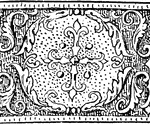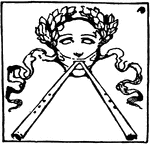
Valerian Flower
Valerian is a hardy perennial flowering plant, with heads of sweetly scented pink or white flowers.…

Valerian Flower (Longitudinal Section)
An illustration of a longitudinal sectional view of the valerian flower. Valerian is a hardy perennial…
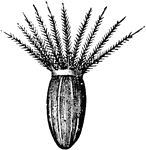
Valerian Seed with Pappus
An illustration of the valerian seed with attached pappus. In a composite flower, Pappus is the part…
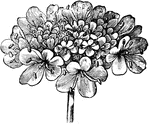
Inflorescence of Field Scabious
An illustration of the inflorescence of the field scabious. Knautia arvensis, commonly known as Field…
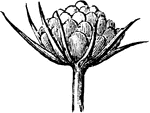
Young Inflorescence of Field Scabious
An illustration of the young inflorescence of the field scabious. Knautia arvensis, commonly known as…

Ray-floret of Field Scabious
An illustration of a ray-floret of the field scabious. Knautia arvensis, commonly known as Field Scabious,…

Ray-floret of Field Scabious
An illustration of a ray-floret of the field scabious. Knautia arvensis, commonly known as Field Scabious,…

Seed of Field Scabious
An illustration of the seed of the field scabious. Knautia arvensis, commonly known as Field Scabious,…

Comfrey
Comfrey (also comphrey) is an important herb in organic gardening, having many medicinal and fertilizer…

Comfrey Flower
Comfrey (also comphrey) is an important herb in organic gardening, having many medicinal and fertilizer…

Comfrey (Longitudinal Section)
Comfrey (also comphrey) is an important herb in organic gardening, having many medicinal and fertilizer…

Sepal and Fruit of Comfrey
Comfrey (also comphrey) is an important herb in organic gardening, having many medicinal and fertilizer…
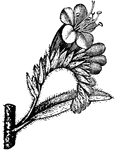
Viper's Bugloss Inflorescence
Echium vulgare (Viper's Bugloss) is a species of Echium native to most of Europe, and western and central…

Viper's Bugloss Flower
Echium vulgare (Viper's Bugloss) is a species of Echium native to most of Europe, and western and central…
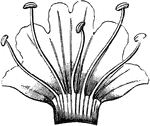
Viper's Bugloss Corolla and Stamens
Echium vulgare (Viper's Bugloss) is a species of Echium native to most of Europe, and western and central…

Plantain Flower and Bract
An illustration of a plantain plant flower and bract. In botany, a bract is a modified or specialized…

Encarpus
"In architecture, a sculptured ornament in imitation of a garland or festoon of fruits, leaves, or flowers,…
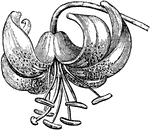
Turk's Cap Lily
Lilium martagon (Martagon or Turk's cap lily) is a species of lily. It has a widespread native region…
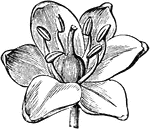
Scilla
Scilla (squill) is a genus of bulb-forming perennial herbs in the Hyacinthaceae. The 90-odd species…
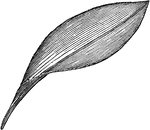
Endogenous Leaf
The image shows how endogens grow threw elongation internally. "Endogenous leaf, showing its parallel…
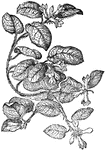
Trailing Arbutus
The Trailing Arbutus (Epigaea repens) is a spreading shrub in Ericaceae family of heaths.

Epiphyllospermous Frond
"Part of Epiphyllospermous Frond. In botany, bearing the fruit or spores on the back of the leaves or…

Club Moss
Lycopodiopsida is a class of plants often loosely grouped as the fern allies, and includes the clubmosses.…
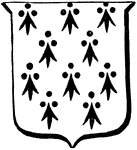
Ermine
"In heraldry, one of the furs, represented with its peculiar spots black on a white ground (argent,…
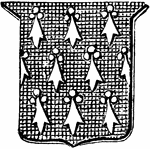
Ermines
"In heraldry, a fur of a black ground with white spots (sable, spots argent): reverse of ermine. Also…
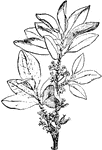
Coca
The flowering branch of the coca plant (Erythroxylon coca) best known for its use in the drug cocaine.
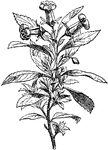
Escallonia
"Escallonia macrantha. Escallonia is a South American genus of trees or shrubs, of the natural order…

Greek Hydria
This Greek Hydria is painted in black, reddish brown and white. Decorated of the highest class, the…

Greek Lekythos
This Greek Lekythos is painted in black and white. The form is elongated and cylindrical, while the…

Greek Lekythos
This Greek Lekythos is painted in black and white. The form is elongated and cylindrical, while the…
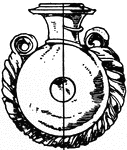
Antique Bottle
This Antique bottle is a small watch shaped perfume bottle. Made out of blue and white glass, it has…
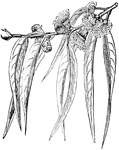
Blue Gum
A flowering branch of the Blue Gum Tree (Eucalyptus globulus), a tree in the Myrtaceae family of evergreen…
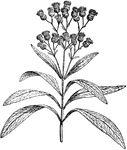
Ayapana
The Ayapana (Ayapana triplinervis) is a flowering shrub in the Asteraceae family of daisies.
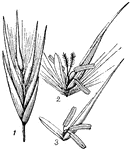
Reed
The common reed of the American and European reed swamps, growing from 5 to 12 feet high with leaves…

The Large Cane
The large cane, which forms the cane brakes of the southern states. It grows from 10 to 20 feet in height…

White-Tipped Sicklebill Hummingbird
The White-Tipped Sicklebill (Eutoxeres aquila) is a bird in the Trochilidae family of hummingbirds.
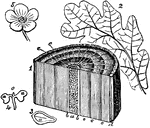
Section of Branch Showing Exogen
"Exogen. 1. Section of a branch of three years' growth: a, medulla or pith; b b, medullary sheath; e…
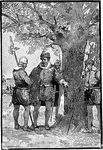
Croatan Carved into Tree at Roanoke
John White finds the only clue to the disappearance of the "Lost Colony" of Roanoke: a tree carved with…

Decorative Floral V
An ornate capital V surrounded by leaves and vines, used at the start of a new chapter or heading.
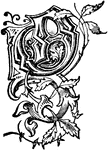
Decorative Floral O
An ornate capital O surrounded by leaves and vines, used at the start of a new chapter or heading.
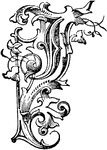
Decorative Floral J
An ornate capital J surrounded by leaves and vines, used at the start of a new chapter or heading.
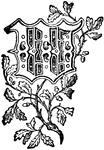
Decorative Floral W
An ornate capital W surrounded by leaves and vines, used at the start of a new chapter or heading.
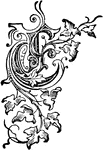
Decorative Floral E
An ornate capital E surrounded by leaves and vines, used at the start of a new chapter or heading.
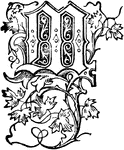
Decorative Floral M
An ornate capital M surrounded by leaves and vines, used at the start of a new chapter or heading.

Decorative Floral A
An ornate capital A surrounded by leaves and vines, used at the start of a new chapter or heading.

Decorative Floral D
An ornate capital D surrounded by leaves and vines, used at the start of a new chapter or heading.
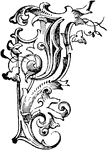
Decorative Floral I
An ornate capital I surrounded by leaves and vines, used at the start of a new chapter or heading.

Decorative Floral T
An ornate capital T surrounded by leaves and vines, used at the start of a new chapter or heading.

Decorative Floral B
An ornate capital B surrounded by leaves and vines, used at the start of a new chapter or heading.
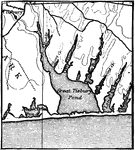
Bay-bar
A Bay-bar, with narrow inlet which leaves the water of the bay salty. South Shore of Marthas Vineyard.
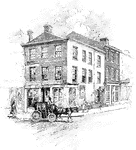
Southern Literary Messenger Building
The Southern Literary Messenger was a periodical published in Richmond, Virginia, from 1834 until June…

Strawberry Flagellum
"In botany, a runner; a weak, creeping shoot sent out from the bottom of the stem, and rooting and forming…

Fly Book for Fishing
"A case in the form of a book in which to keep fishing-flies. It has leaves of Bristol-board or other…
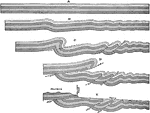
The Chief Mountain Thrust of Montana
A series of diagrams showing the development of the Chief Mountain thrust. The older rocks from which…
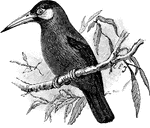
White-Eared Jacamar
The White-Eared Jacamar (Galbalcyrhynchus leucotis) is a bird in the Galbulidae family of jacamars.


